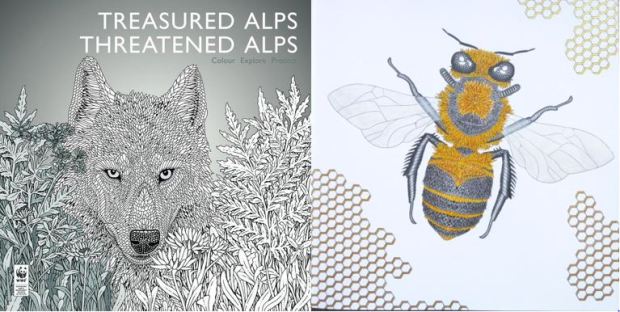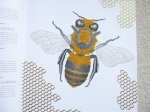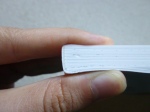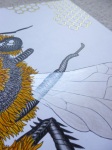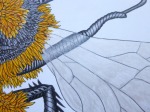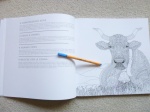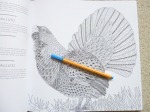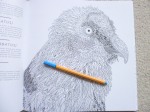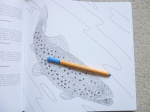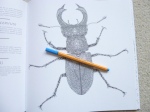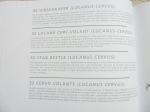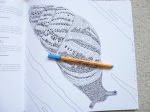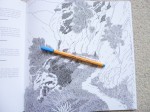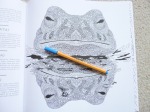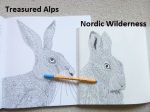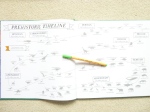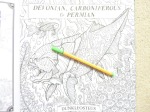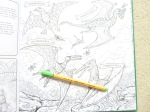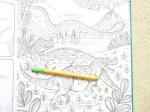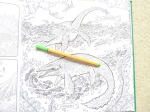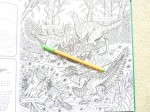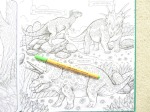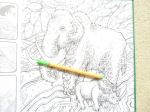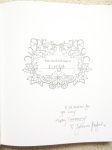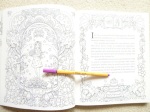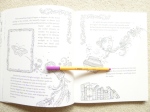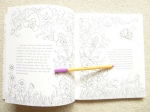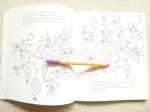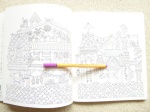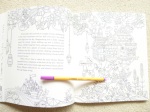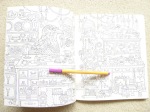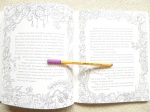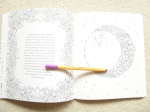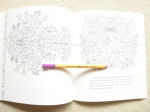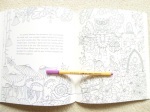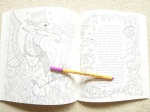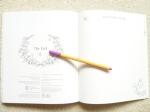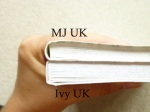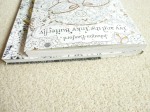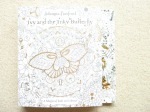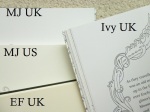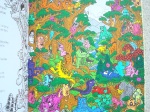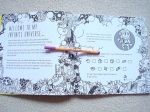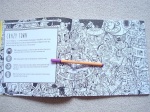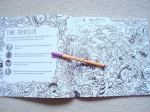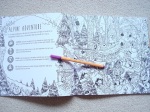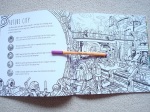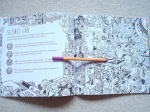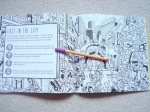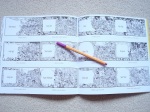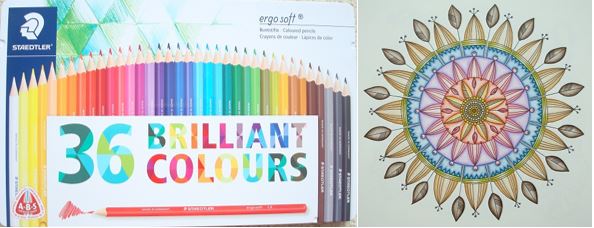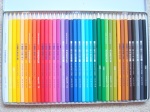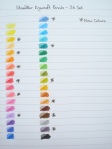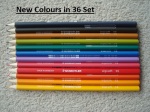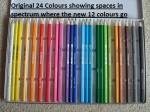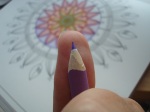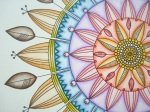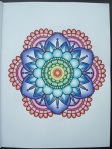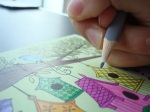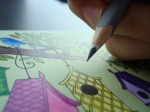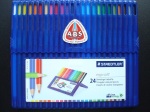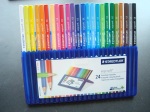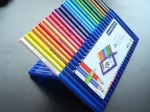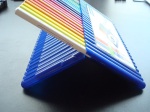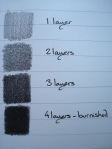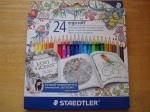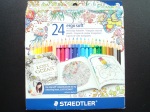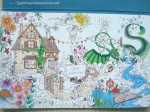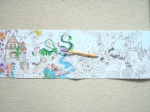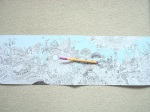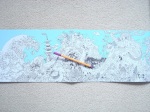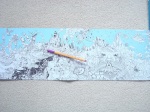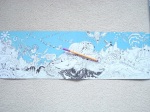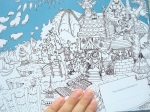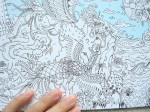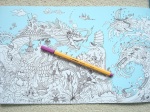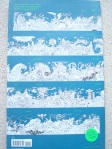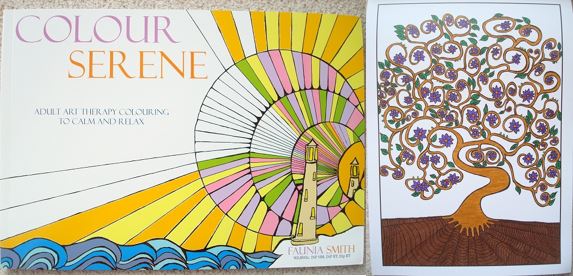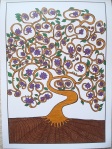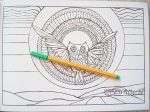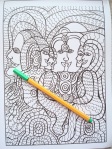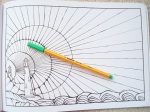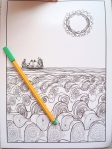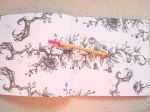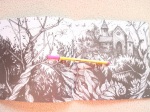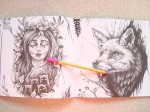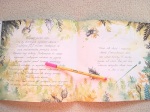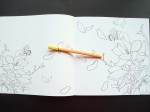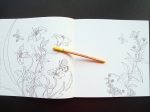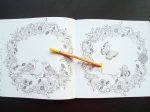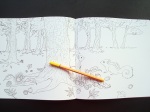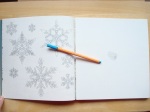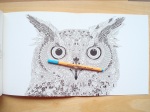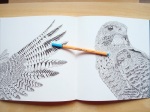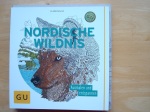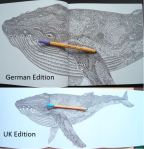Disclaimer – Please read this disclosure about my use of affiliate links which are contained within this post.
Treasured Alps, Threatened Alps is illustrated by Claire Scully of The Menagerie series, written by Jacopo Pasotti and published by Bergli Books, it is from my personal collection. This book has been created to highlight the plight of a number of endangered species of animals, plants and landmarks in the alps and a portion of the purchase price is donated to the World Wildlife Fund though sadly it doesn’t state how much from each book is donated. The book is expensive compared to most and therefore a considered purchase but I can honestly tell you that it’s worth the price. I’ve been umming and ahhing over purchasing it since it was published in November and I finally bit the bullet a few weeks ago and I truly love it. It’s absolutely huge at nearly 30cm square and it’s really thick due to the paper used. The book is paperback with flexible card covers with a beautiful wolf image on the front that is indicative of the content but not actually included inside the book. The spine is glue and string bound and very sturdy and durable, it’s a little tricky to get the book to lie flat due to it’s thickness but some careful pressure will help this. The 50 images of plants, animals and landscapes are all printed single-sided with information about each one on the opposite page written in English, German, French, and Italian. Each is numbered and named with a brief description of them, their habitat and the reason they’re endangered so you get to learn about each one as you colour it. The paper is bright white, thick and lightly textured, it’s really nice to colour on with pencils, water-based pens don’t bleed or shadow and I’ve even used watercolour paints with a sparing amount of water with great success as you can see in the photos below so you can use any medium you fancy, even alcohol markers if you put protective sheets behind your work and don’t mind bleed-through onto the proceeding page’s information. The image content is mostly animals but also contains 9 images of plants and 4 images of landscapes. These illustrations range from insects including various beetles and butterflies to small mammals and birds including the dormouse and kingfisher all the way up to much larger mammals including wolves and bears. There are recognisable animals that you’ll already know about as well as much less known animals, beautiful images of plants showing them like wildlife guides do or in situ as well as a few landscape images of specific areas that are under threat. None of the images in this book are duplicated in any others, although a few of the animals have been previously illustrated in other books (e.g. bear, wolf, owl), all of this artwork is original so even if you have all of Claire’s books like I do, you won’t be getting repeats!
In terms of mental health, this book is great, it’s really absorbing and all of the images are nature-based which is inherently very calming. All of the illustrations are drawn in Claire’s beautiful signature style, this is very detailed and intricate but don’t be put off, you can always colour over the sections rather than within each one separately and this makes the images much easier to colour. The animals images are by far the most detailed, but the plant images are a fair bit less intricate with far fewer details so there is some range in these levels for your good and bad days. The line thickness is thin throughout, just like always with her art so you will need pretty good vision and fine motor control but not perfect if you’re happy to colour over sections. The artwork is all very natural and really beautiful to look at, even uncoloured it’s just stunning and I’ve spent more time than I care to admit just poring over the pages. The pictures are huge and can take ages to colour if you wish so you can really take your time over them; many have natural stopping points for those with concentration issues who like to finish sections but on the whole these images do require a fair bit of concentration and focus. They look equally amazing coloured in realistic or outlandish colour schemes so you don’t need to feel restricted just because they’re drawn quite realistically. Because the images are printed single-sided, you can really branch out with using mediums you might otherwise struggle to use in books, the paper is really good quality and can take a lot more than most and you can easily use mixed media too with some really great effects and to top it all off, you could carefully remove your finished pages and frame them to gift or display if you wish. The images are beautiful and they really do transport you to the alps, you can practically feel the chill in the air and hear the ringing of cow bells and if you want to fully immerse yourself and gorge on Swiss chocolate whilst colouring then I’d highly recommend that too, it’s all part of the experience!
Overall, I would highly recommend this book, the artwork is beautiful, the cause is really important and best of all the production quality of the book is really high so although it’s expensive, you’re still getting a lot of book for your money and not once have I regretted the cost. If you like Claire’s work then this book is an absolute must-have!
If you’d like to purchase a copy it’s available here:
Amazon UK – Treasured Alps, Threatened Alps
Book Depository Worldwide – https://www.bookdepository.com/Treasured-Alps–Threatened-Alps/9783038690276/?a_aid=colouringitmom
Video Flick-Through
The image below was coloured with Faber-Castell Polychromos Pencils, Staedtler Triplus Fineliners, and the metallic areas were coloured with Kuretake Gansai Tambi “Starry Colors” metallic watercolour paints using very fine brushes for the honeycomb.
